Posted by YANGDA on 31st Oct 2025
Practice in Nigeria: Pipeline Inspection via Integrated Drone System
This August 2025, the YANGDA team conducted a training visit to Nigeria again, and unlocked a new drone application practice — pipeline inspection.
Pipelines, widely used in the energy industry to transport gas, oil, and other chemical products, often cover large areas and, in major projects, can form complex networks.
To reduce potential accidents and environmental damage along the area that pipelines go through, periodic inspections are needed to detect leaks, corrosion, cracks or other structural weakness.
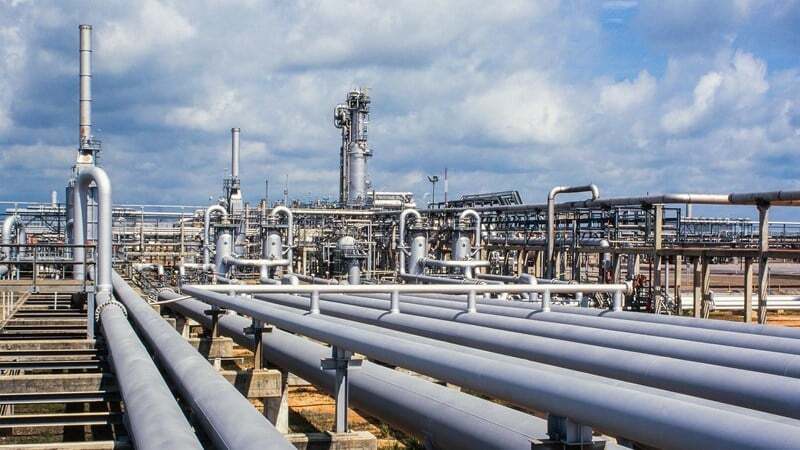
Image: https://www.woodmac.com/industry/commodity-trading-analytics/oil-gas-transportation-pipelines-storage/
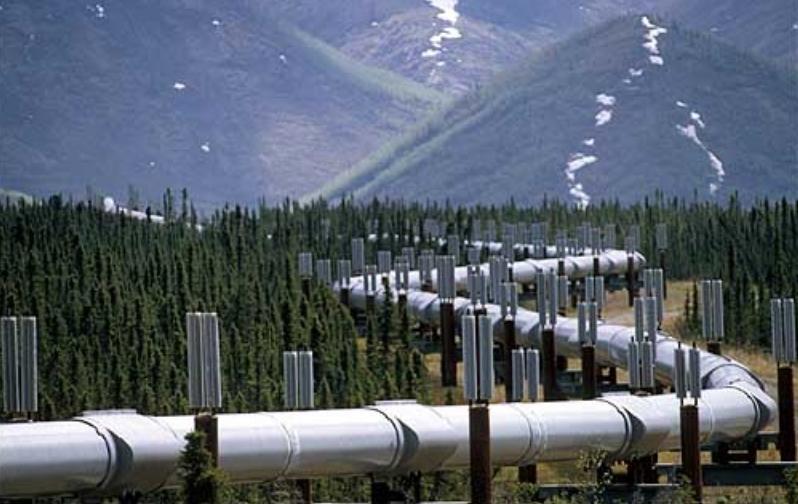
Image: https://www.forbes.com/sites/jamesconca/2018/04/12/supersize-it-building-bigger-pipelines-over-old-ones-is-a-good-idea/
Why pipeline inspection can be challenging?
Given the information and pictures above, it’s easy to see why pipeline inspection can be challenging:
- Remote location: To maximize land use and minimize potential risks to residents and cities, pipelines are often located in remote regions where transportation and infrastructure are limited.
- Broad coverage: Designed to transport resources over long distances or serve multiple regions, pipelines often span vast areas, making manual inspection costly and labor-intensive.
- Intricate structure: Most manual inspections are limited to ground-level checks, making it difficult to detect cracks, leaks, or corrosion in elevated or hard-to-reach areas in time.
- Chemical hazards: Pipelines often transport chemical products that can harm humans through inhalation or skin contact. Manual inspection inevitably increases the risk of such exposure.
How Can Integrated Drone System Help?
- Flexible vision: Take the Nigerian case as an example: the Sky Whale VTOL provided a more comprehensive view than traditional manual inspection. Thanks to its vertical takeoff and landing capability, it can hover precisely in place, delivering clear bird’s-eye imagery even over challenging terrain.
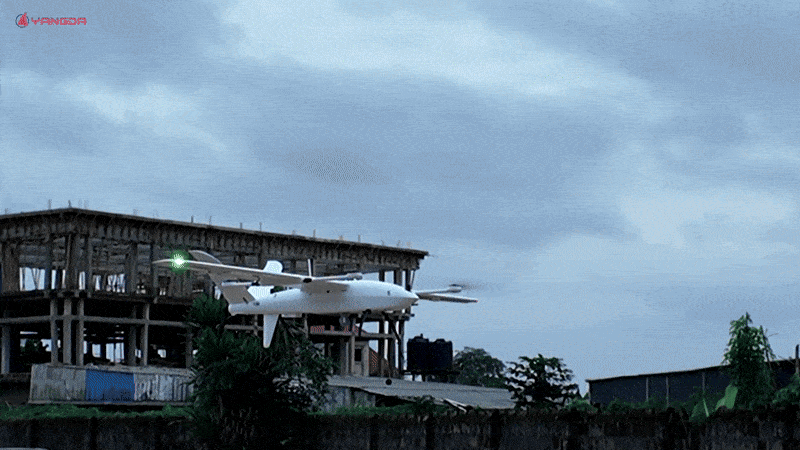
Sky Whale VTOL Performing Vertical Landing
- Long endurance: Compared to manual inspection, drone systems enable continuous, long-endurance monitoring by eliminating constraints like transportation and staff shifts. For example, the Sky Whale VTOL, carrying a 2 kg payload, can sustain 3.5 hours of continuous flight while maintaining stable focus and precise observation.
- Quick responsiveness: Most manual inspections rely on radio or cellular networks for communication, which makes them vulnerable to poor signal conditions. In contrast, modern drone inspections use a bidirectional video and data link to ensure stable connectivity — the Ground Control Station (GCS) receives real-time video and telemetry from the drone while simultaneously sending operation commands with minimal latency.
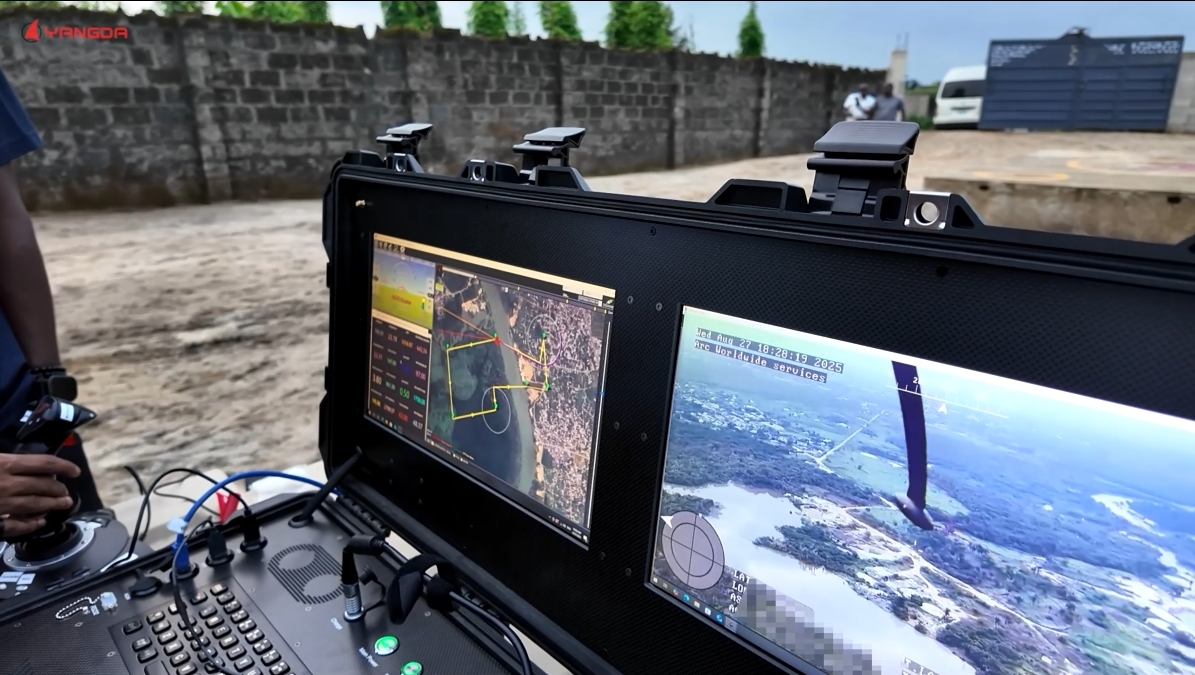
Ground Control Station Showing Video & Telemetry Feedback
- Less safety concern: By removing the need for staff to work near hazardous chemicals, drone inspection greatly reduces safety risks and operational costs. Built with protective materials and designed for swift, stable performance, drones like the Sky Whale VTOL deliver high efficiency and long-term reliability across demanding inspection tasks.
- Multi-platform integration: Besides gimbal cameras, drones can be equipped with various payloads such as LiDAR, thermal imagers, and gas detection sensors, enabling versatile applications across all phases of pipeline projects — from route planning and construction supervision to post-construction inspection and maintenance.
According to Fact.MR, drone pipeline inspection has seen significant development and is expected to continue soaring over the next 10 years. As “The market in North America, especially the United States and Canada, is mature”, Europe and other regions have also been focusing on expanding UAV adoption in pipeline inspection, embracing smart and modern capabilities enabled by the drone technology.
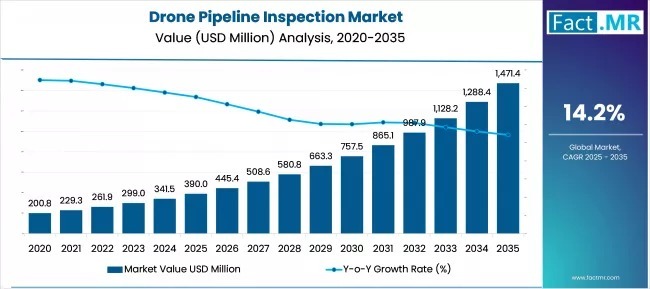
Diagram: https://www.factmr.com/report/drone-pipeline-inspection-market
Devices Overview
VTOL Drone: Sky Whale Heavy Lift Long Endurance Electric VTOL Drone
Datalink: Videopass-N150 Long Range Digital Video And Data Link
